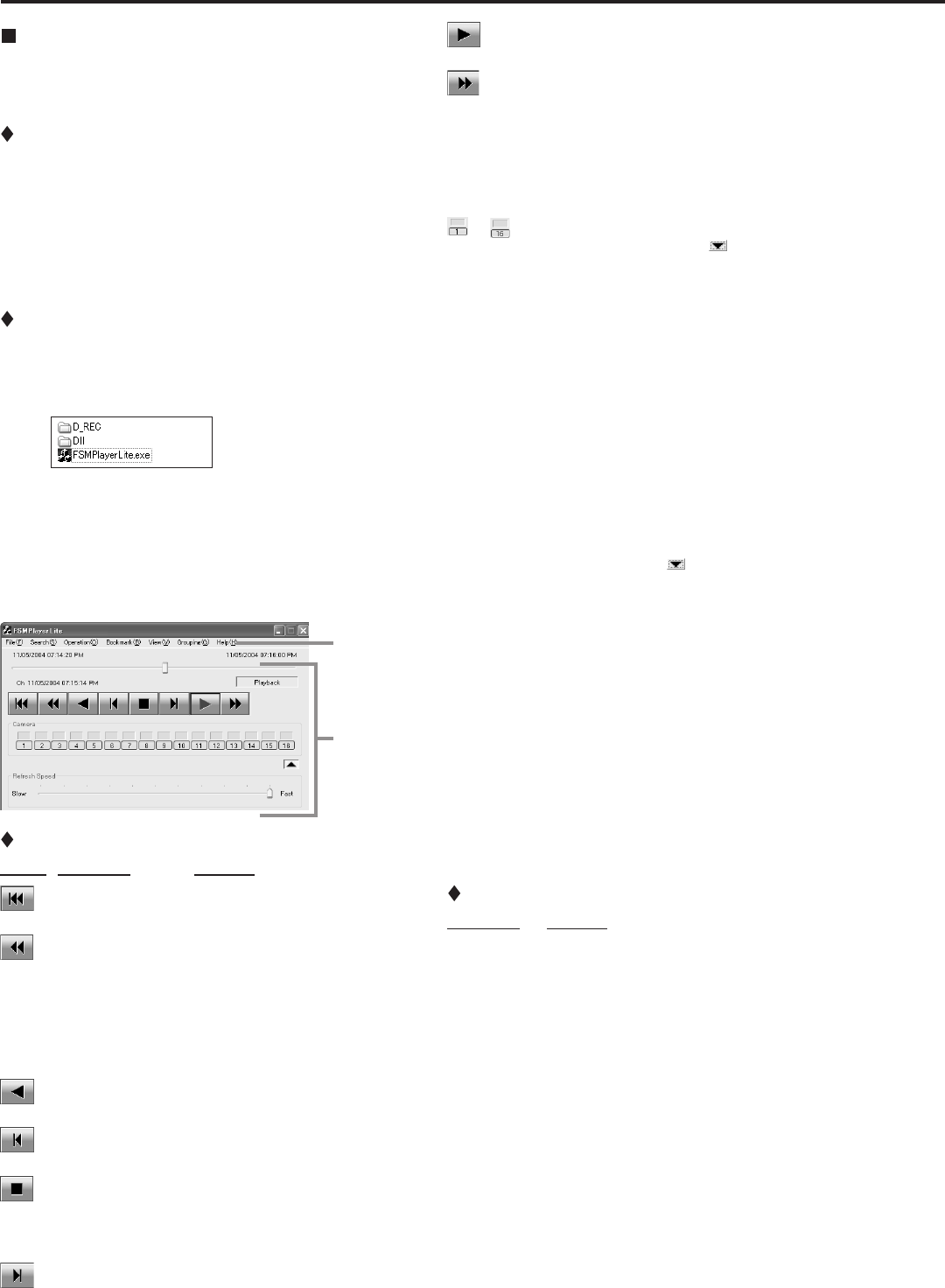
22
••••••••••••••••••••••••••••••••••••••••••••••••••••••••••••••••••••••••••••••••••••••••••••••••••••••••••••••••••••••••••••••••••••••••••••••••••••••••••
Playback software
When copying the data to CD/DVD or USB memory, the
needed PC playback software is automatically copied on to
the disc. Refer to the following for using the software.
System requirements
• OS: Microsoft Windows 2000 or Windows XP.
• CPU: IBM PC/AT compatible with an Intel Pentium
series processor of at least 500 MHz.
• RAM: 256 MB or more.
• Hard disk drive: System drive with unused space of at
least 200 MB.
• Display device: XGA (1024 pixels X 768 pixels) or
higher.
Starting up the application software
step1. Load the CD/DVD/USB memory to the personal
computer which has been used for copy.
step2. Double-click the icon of the disc to open.
step3. Start up the application software.
Double-click the “FSM Player Lite.exe.” The applica-
tion software starts up and the operation panel
appears.
When the picture cannot be loaded, use the [Folder]
command in the [File] menu to select the picture
folder to be played back.
Operational panel
Button Command Function
Rewind Click to jump to the head of the
recording data.
Reverse Search Click to playback the picture in
the reverse direction with a
higher speed than normal
playback. The speed changes
from X1 to X2, X4, X8 and back
to X1 at every press of this
button during reverse playback.
Reverse Playback Click to playback the picture in
the reverse direction.
Field Reverse Click to display a still picture one
field before.
Stop Click to stop playback. Audio, if
recorded, will be played back
after the stop when the audio
command has been enabled.
Field Advance Click to display a still picture one
field after.
Playback Click to playback the picture in
the forward direction.
Forward Search Click to playback the picture in
the forward direction with a
higher speed than normal
playback. The speed changes
from X1 to X2, X4, X8 and back
to X1 at every press of this
button during playback.
to Camera (These buttons are displayed
when the
button located on
the lower right of the Forward
Search button is pressed.) Click
to display the picture of the
camera corresponding to the
number of the button. The
indicator turns green for the
camera number which is being
displayed, and it turns black for
the camera number which is not
being displayed. The picture is
not displayed even when the
indicator turns green if the data
has not been copied for that
camera number.
Refresh Speed (This slider is displayed when
the
button located on the
lower right of the Camera button
is pressed.) Drag with the
mouse to adjust the playback
speed. When setting to “Fast,” it
may disrupt the operation
depending on the performance
of the personal computer used.
Use this setting with the proper
picture playback speed suitable
to the personal computer used.
The playback speed slider may
not be changed at a constant
interval when the data which is
additionally copied is played
back.
File menu
Command Function
Convert When clicking during the playback is stopped,
[Convert] screen appears. Specify the range
to be converted and the camera number, and
then press the [JPEG] or [AVI] button to
convert and save the picture data collectively.
Collective conversion requires adequate free
space in the physical memory and the hard
disk for temporary files (the system partition
and save drive). The limitations of available
memory space and hard disk space vary
depending on your operating conditions.
Perform conversion starting from a small file
that requires only several seconds to be
converted while checking the state of the
memory and the hard disk.
Menu
Operational
Panel
Copying the recorded data (continued)


















